Pimy - what is it, fashion trends
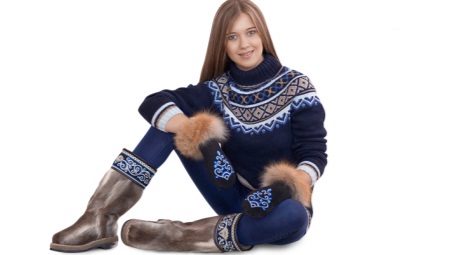
Today, in the fashion industry, there is a very clear tendency to imitate the well-forgotten old, modernize the classics and stylize them for folk themes. One of the latest innovations was the revival and adaptation of the traditional footwear of the northern peoples to modern fashion.
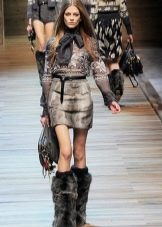

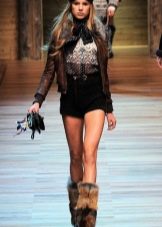
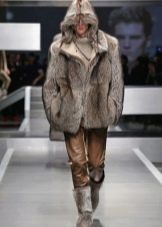
A bit of history
The folk winter shoes of the inhabitants of the Far North have several types and, accordingly, names. Let's analyze the most common:
- KISY (accent on the last syllable) - shoes of reindeer breeders and fishermen, made of venison (skin with a reindeer drumstick)... Some sources note that these boots were used mainly in the cold spring and late autumn. Such fur shoes are typical of the Nenets, Khanty and Mans.
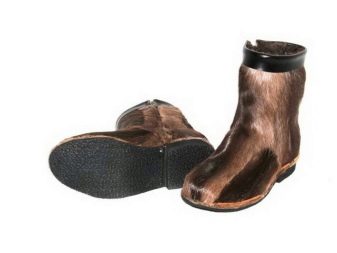
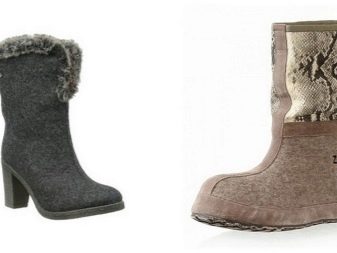

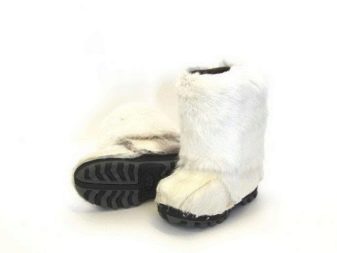
- TORBASA (torbaza) is a predominantly Yakut type of footwear, sewn with fur outside. Boots are made of genuine leather and cloth with insulation - wool lining.
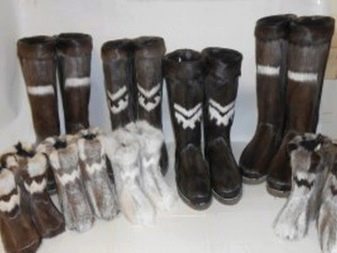
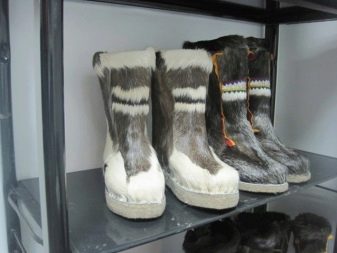
- PIMA (the end of the word is also stressed) is another, the most common and popular type of winter shoes for northerners. Until now, the main territories in which both demand and supply of this type of fur footwear are flourishing are the Arkhangelsk Region, the Perm Territory and the Komi Republic.
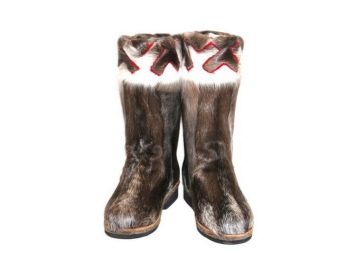
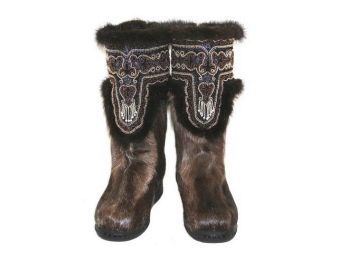
What are these mysterious northern boots? They are made by hand from the skin of a deer taken from the bottom of its legs. Pimas are always sewn with the fur out so that the pile is directed downward. This feature allows you to protect your foot from getting wet. The height of the bootleg of such boots today starts from 40 centimeters and reaches 70-75 cm. Sometimes the highest point of the pim can be in the groin area.
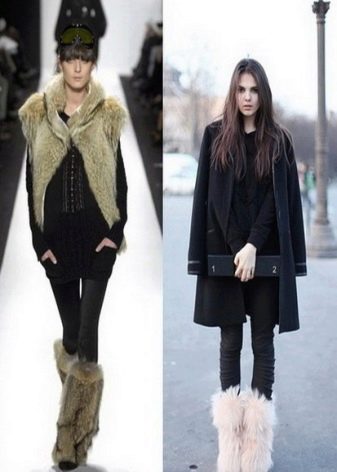

In the North, there are two of the most recognizable types of pimas: Nenets and Izhma.Basically, they are similar to each other, but there are also minor differences.
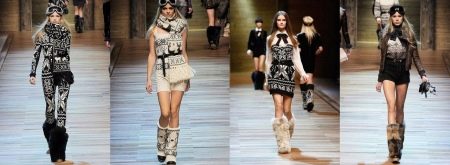
Nenets Pims:
- wide head;
- men's shoes are decorated with ornaments;
- female pimas are cut differently from male ones;
- women's models almost never have a sole, and if any were made, it will be made of deer brushes. Men's boots are always made with a sole, which is made from the skin from the forehead of a deer;
- pimas for women are transported on a separate sled.

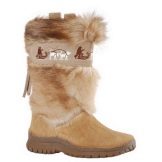


Izhma fur pimas:
- narrow head that fits snugly to the foot;
- in men's shoe decorations - straight and zigzag lines;
- identical cut for both male and female pims;
- the sole of boots for both sexes is made of the skin from deer foreheads;
- both models can be transported on one sled.
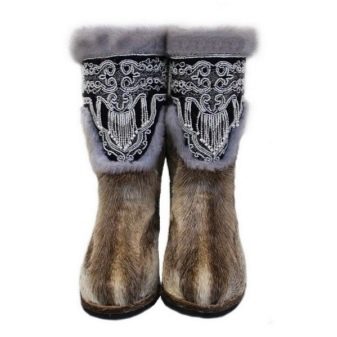

There is another definition of pims - Siberian, however, they are, rather, the progenitors of the traditional Russian winter shoes - felt boots. Since they are made from felted sheep wool. But, nevertheless, do not confuse Siberian pimas-felt boots with Finno-Ugric fur boots.
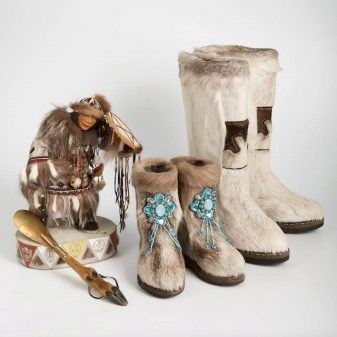
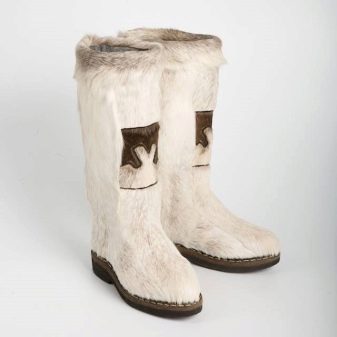
Peculiarities
The main difference between pim and felt boots is that kamus boots preserve almost the original appearance of the original material and actively "use" its best qualities. In the process of felting, the sheep's wool is somewhat modified. Also, pimas are much lighter than boots.
Very often, Nenets boots are confused with high fur boots - another famous northern type of footwear. But they are very different from each other:
- Pimas can be made only from the skin of deer legs, and high fur boots - from the fur of elk, roe deer, horse and even seal.
- Pims are always made with fur outside, while high fur boots can be sewn with a fleecy part inside.
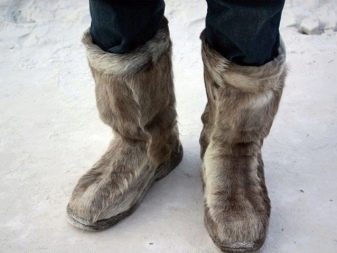
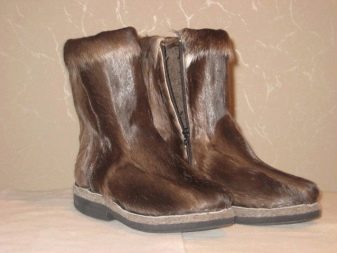
The main feature of pims is that they are very warm (they can withstand temperatures down to -50 degrees). Deer skin (kamus) allows the legs to "breathe". In addition, it has the property of a thermos. The villi of a deer hide look like porous tubes filled with air. Therefore, the heat generated by the feet of a person is not only stored in pimas, but also multiplied.
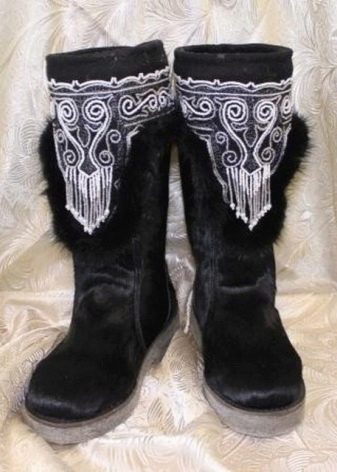
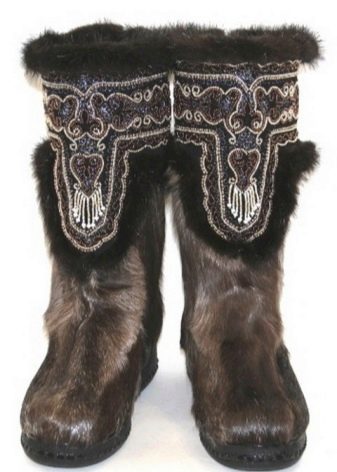
These northern shoes are very durable, wear-resistant and therefore durable. Quality natural pimas can be worn for more than 10 seasons, replacing only the sole if necessary.
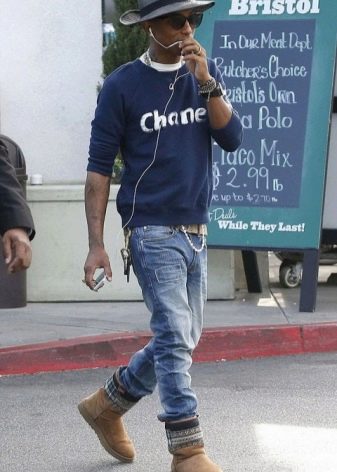

In general, any footwear that has arrived in the wardrobes of modern fashionistas from the Northern regions becomes a stronghold of quality, warmth and practicality. And, supplemented by unconventional decorations for her (ribbons, rhinestones, beads), it becomes an original and unique object of pride for housewives.

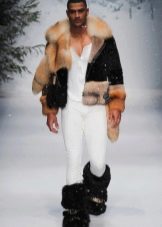
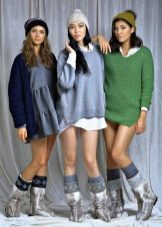

Models
The craftswomen of the Far North very deftly and skillfully observe folk traditions when sewing different models of pim. Fur deer boots are divided into three types of models:
Men's. Maximum attention is paid to the production of these pimas. From 10 to 13 kamuses are spent on sewing men's boots. The method of attaching them will depend on the height of the bootleg. The high pimas are tied to the belt with special leather laces, and the lower ones are tied with woven woolen straps under the knee. A truly masculine ornament used to decorate pimas is modest, but eloquent, in the best traditions of the northern peoples.
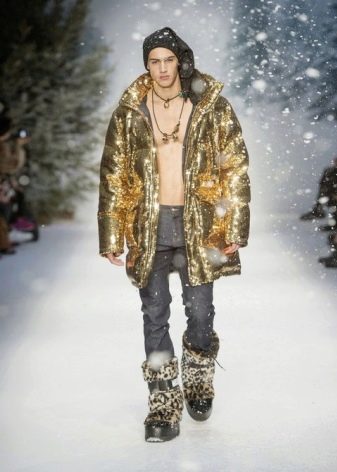

Women's fur boots are mainly up to the knee, therefore, the number of skins for their production is limited to 7-8 pieces. Women's pimas are always tied only to the belt. The pattern on them is located much lower than the male ones.
Baby pimas differ from adults only in sizes and patterns intended for children.

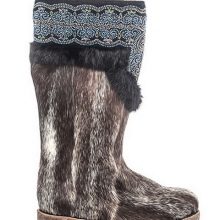
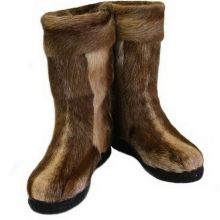
Colors and decor
The most common pim color is the natural color of deer - brown (available in shades from light to dark) or black with "gray". Today on the market there is a wide range of color palette of such boots, but here you need to be extremely careful and attentive. Poorly dyed pims can cut the lifespan of a shoe up to half.
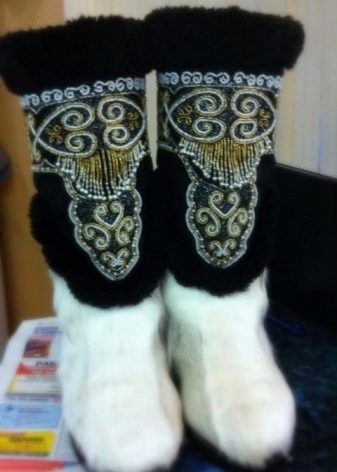
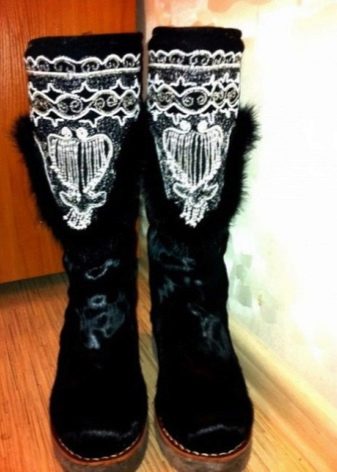
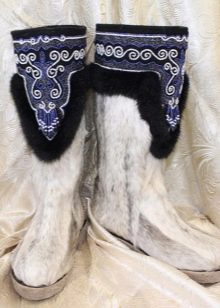
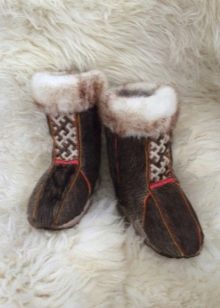

White pimas look very elegant and elegant.Moreover, they may no longer be decorated with anything, but cause delight and awe. Models of this color range are very rarely presented on sale and, accordingly, have a higher price.
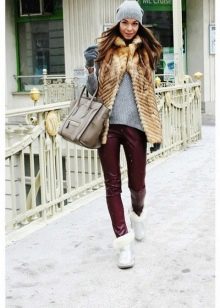
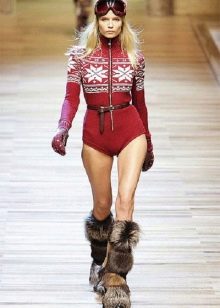
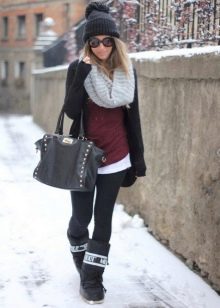
Traditional ornaments of this or that nation are considered traditional decorations for this shoe. At the same time, each model has its own decoration.
So, for example, female pimas are decorated with patterns with unusual names: "firebrands", "veal horns". Scraping, appliqué, and painting were considered a separate craft to give uniqueness to women's models. A kind of pattern on the side of the pim is made of various fur strips and cloth for beautiful ladies, who serve not only as a banal decoration, but also as a set of rules-commandments: do not kill, do not steal, do not use foul language and do not offend the weak.
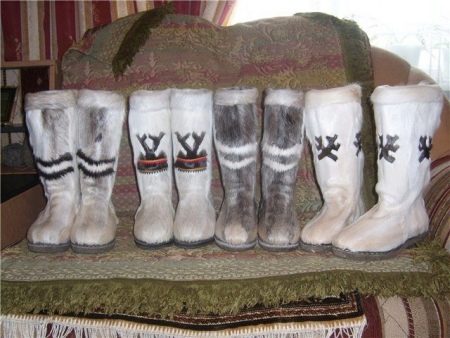
Men's boots are made with horizontal fur inserts in the front, between which fabric ribbons of blue, red and green colors fit very harmoniously. Names of ornaments for men sound like "man's head" and "bear ears".

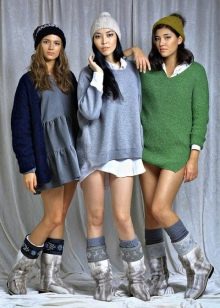

Manufacturers
Since pimas are a national product, they are mainly made by folk craftsmen. Hand-made deer fur boots are highly valued because they are always different, despite the technique and technology of their sewing that has been verified over the years and passed down from generation to generation.
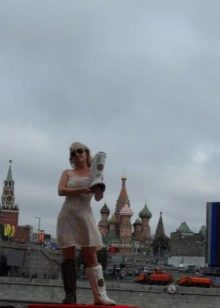
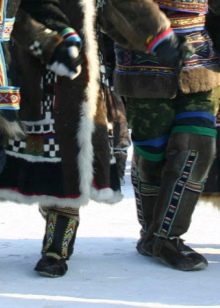

There are factories, workshops and workshops for the production of pim. For example, the Dary Severa trading and production company (R. Komi, Syktyvkar), widely known among admirers of northern paraphernalia, produces a wide range of pimas that can be ordered without leaving home. On the official website of the company, you can easily get acquainted with information on how this can be done, and what models of camus shoes can be sewn.
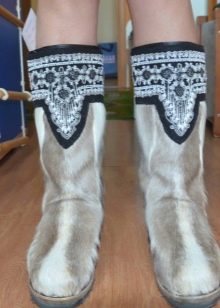
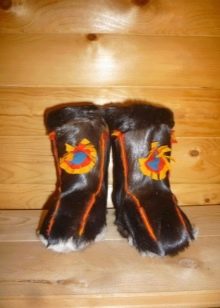
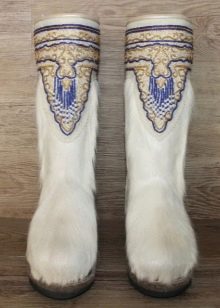
LLC "Kamus", located in the same place, offers classic pim models with traditional fur ornaments.
LLC "Reindeer Service" - a workshop for sewing a wide variety of products from reindeer fur and leather. It is located in the village of Sizyabsk, Izhemsky District, Komi Republic. No more than a dozen people are involved in making pimas by hand.
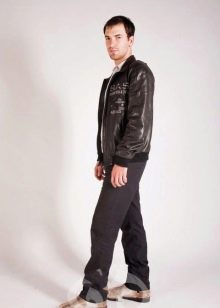
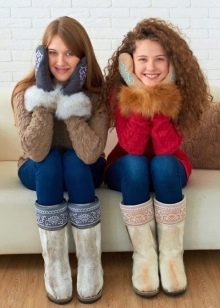

The factory of high fur boots from kamus "Aikhal", located in another cold city of Russia, Irkutsk, offers original pimas with folk motives and patterns of the Far North.
There are also a number of factories operating away from freezing conditions. All these craftsmen and craftsmen - people from the most northern regions of Russia - share their works with the rest of the inhabitants of our vast homeland with great pleasure.
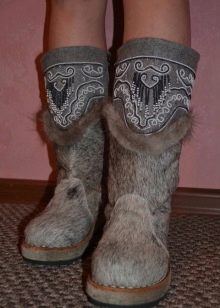
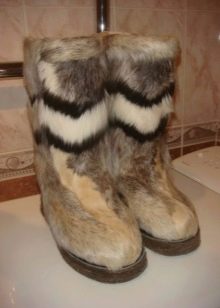
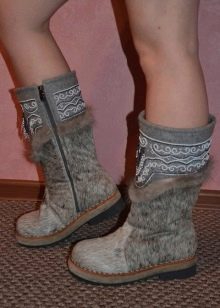
How much are?
The price tag for deer fur boots varies depending on their size, bootleg height, and jewelry. The way of transportation of the pim to the customer also makes a significant contribution to the pricing.
So, for example, low boots made of reindeer fur, ordered directly from the Far North, will cost the buyer 20-22 thousand rubles. Delivery from central Russia can reduce this figure by 3-4 thousand.

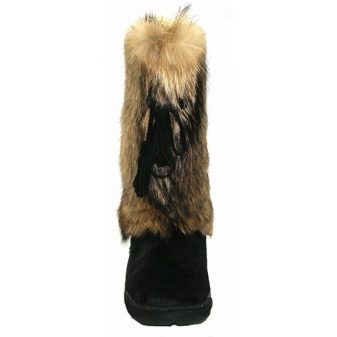
The price of full-fledged female and male pims fluctuates in the region of twenty to thirty thousand per pair, also depending on the number of components and the method of delivery.

In the markets you can find shoes that will cost less than 10,000 rubles, but their quality will remain in question. After all, natural deer skin, original Nenets jewelry and handicraft always have a high price and excellent quality.
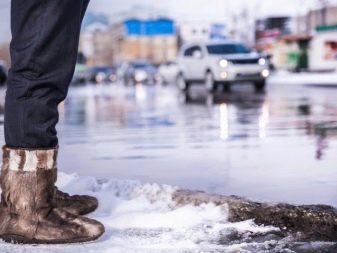

How to choose the right one?
Manufacturers of quality natural pimas provide several basic criteria by which you can easily determine the "right" footwear:
- Move your hand against the grain. This trick will allow you to see how high quality material the pimas are made from. At the same time, the pile should be elastic, not wrinkle, not break and easily return to its original position.
- Color. You need to take a close look at the colors.Natural camus has smooth transitions of shades, there should not be any "flashes" of color.
- Squeeze the bootleg with your hand. You should not hear any crunch or crackle during the compression process. Otherwise, the dressing of the kamus before sewing these shoes was done incorrectly. Pims can simply burst when worn.
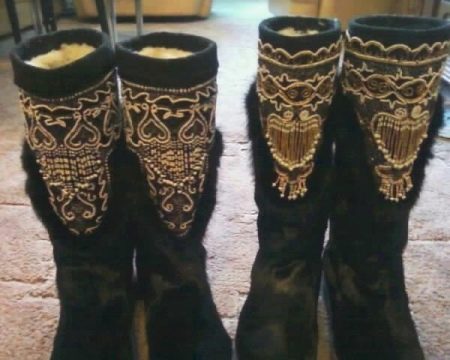
- Smell. Fur boots must be odor-free. When preparing skins for pimas, the kamus is very thoroughly cleaned of deer fat.
- The quality of welts is a border that connects the fur and the sole to each other. It is made from a piece of hard leather not more than 2.5 mm wide. The threads with which the welt is sewn should, as it were, sink into the hole. If you can see threads on the sole, you will soon have to change it.
- The sole consists of several layers of felted wool, or a combination of wool and rubber. The second, of course, will serve you much more than the first, but it is less frost-resistant.
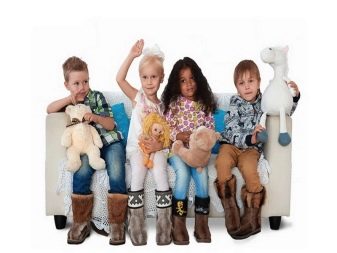
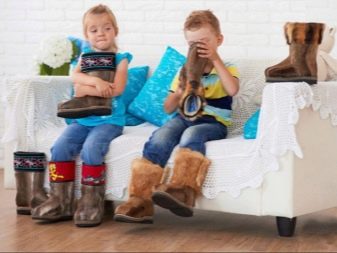

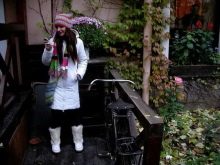

Care Tips
Although reindeer fur is excellent water, dirt and dust repellent, it also needs to be cleaned. In the care and cleaning of pim, you should adhere to the following simple rules:
- - they can be dried by filling them with newspapers and turning them upside down, away from heating appliances;
- - take off shoes only with your hands, in order to avoid abrasion of the fur;
- - wear pimas only in dry frosty weather;
- - it is best to wipe them with a soft dry cloth;
- - if the fur is wet, in no case comb or iron it, otherwise it will crumble;
- - store the pimas in a canvas, suede or natural textile bag, you can also soak them with a good moth repellent, push the papers inside and put cardboard to maintain their shape;
- - reindeer boots are stored in a dark, ventilated place at a room temperature of no more than 23 degrees and an air humidity of just over 65%.
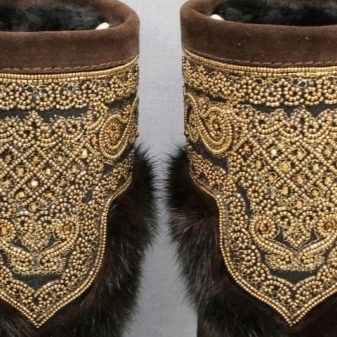
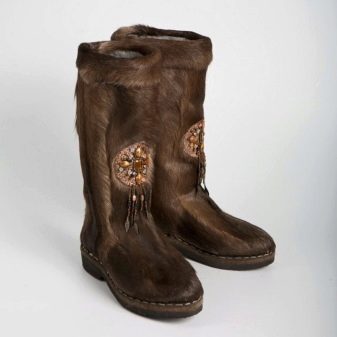
What to wear with?
In modern life, it is very easy to combine any type of footwear with clothes. However, if you are wondering what the pimas are wearing, here are a few looks for your imagination.
For such cute fur boots, any tight trousers tucked inside the pim will do: jeans, leggings, and even leather pants.
White pimas with lace inserts are a great accessory for mini skirts and even dresses.

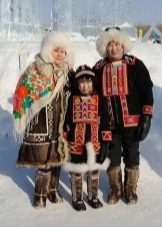

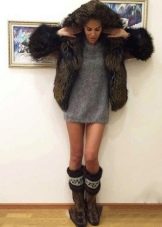
It would seem that coarse brown boots can go well only with trousers, but a woolen gray mini-dress also fits very harmoniously into a modern look, and a fur sheepskin coat on top will add grace to the girl.
Men's pimas-boots are very comfortable and harmoniously fit into the casual look of the wearer.
Skinny men's trousers tucked into boots with a "deer" applique look very stylish, honest and practical.








